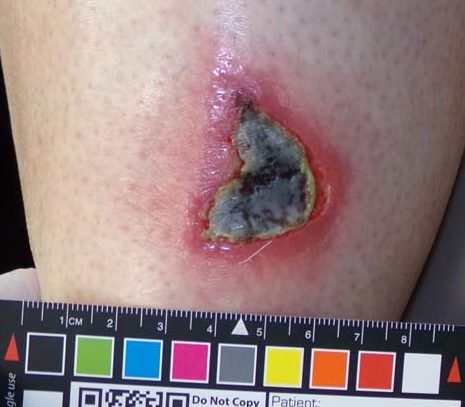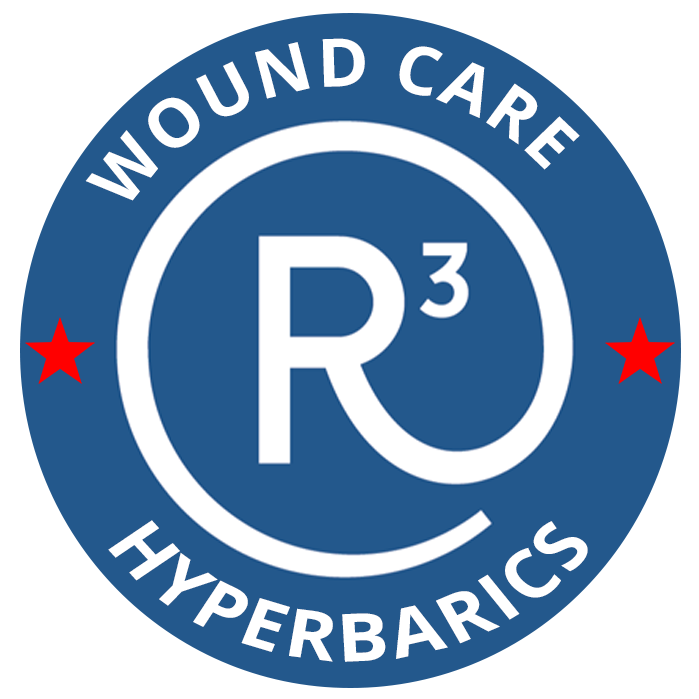Skin necrosis can be scary if you are experiencing it for the first time. What is skin necrosis? And how does it occur? Better yet, how can you prevent necrosis from happening in the first place?
What is skin necrosis?
When blood and oxygen are limited to a specific area of the body, the tissue often dies. Known as necrosis, tissue death can occur from an injury, trauma, radiation treatment, or toxin and chemical exposure. After necrosis occurs, DNA structure damage occurs within the cells, preventing mitosis–the process of healthy and normal cell duplication.
What does skin necrosis look like?
There are two main types of necrotic tissue present in wounds. One is a dry, thick, leathery tissue usually a tan, brown, or black color. The other is often yellow, tan, green, or brown and might be moist, loose, and stringy in appearance. Necrotic tissue will eventually become black, hard, and leathery.

When large areas of tissue become necrotic, this is known as gangrene. Gangrene is death of body tissue due to a lack of blood flow or a serious bacterial infection that requires urgent care.
Can I prevent skin necrosis?
Is there a way to prevent necrosis from occurring in the first place? Some basic first steps to help include:
- Nursing any wound carefully
- Keeping the wound clean
- Washing your hands frequently
- Changing bandages regularly
- Following your doctor or wound care specialists’ instructions in caring for the wound
Sometimes, though, necrosis happens despite using wound care treatments and following all doctor’s instructions. This is often due to underlying conditions and other health issues.
If you believe your wound may have necrotic tissue, we can help.
What treatment do I need for necrosis?
Necrosis can lead to increased pain and leave the affected skin vulnerable to further damage and recurring injury. Since necrotic tissue can also harbor pathogenic organisms, it can lead to infection if left unchecked. As a result, it is often necessary for the dead tissue to be removed before proper healing can begin. The process of removing necrotic (dead) tissue is known as debridement. Wound care specialists are trained in removing necrotic tissue. Once removed, advanced wound care treatments may be prescribed to continue the healing process for your road to recovery.
How HBOT therapy can help prevent necrosis
One such advanced wound care treatment is Hyperbaric Oxygen Therapy (HBOT). Tissue prone to or affected by necrosis needs increased oxygen to heal correctly. Hyperbaric oxygen therapy (or hyperbaric oxygen treatment) involves exposing the body to 100% oxygen at greater than normal pressure. This therapy helps to speed up the healing of surgical wounds and prevent complications such as necrosis. Studies have shown that by increasing oxygenation, oxygen-deficient tissue is given life again.
For more information regarding your specific wound, please contact us to schedule a visit to your R3 Wound Care & Hyperbarics nearest location. We have locations in the Dallas, Fort Worth, San Antonio and Houston areas of Texas. Our wound care specialists at the clinic will assess your condition and then recommend the right treatment plan for you.
